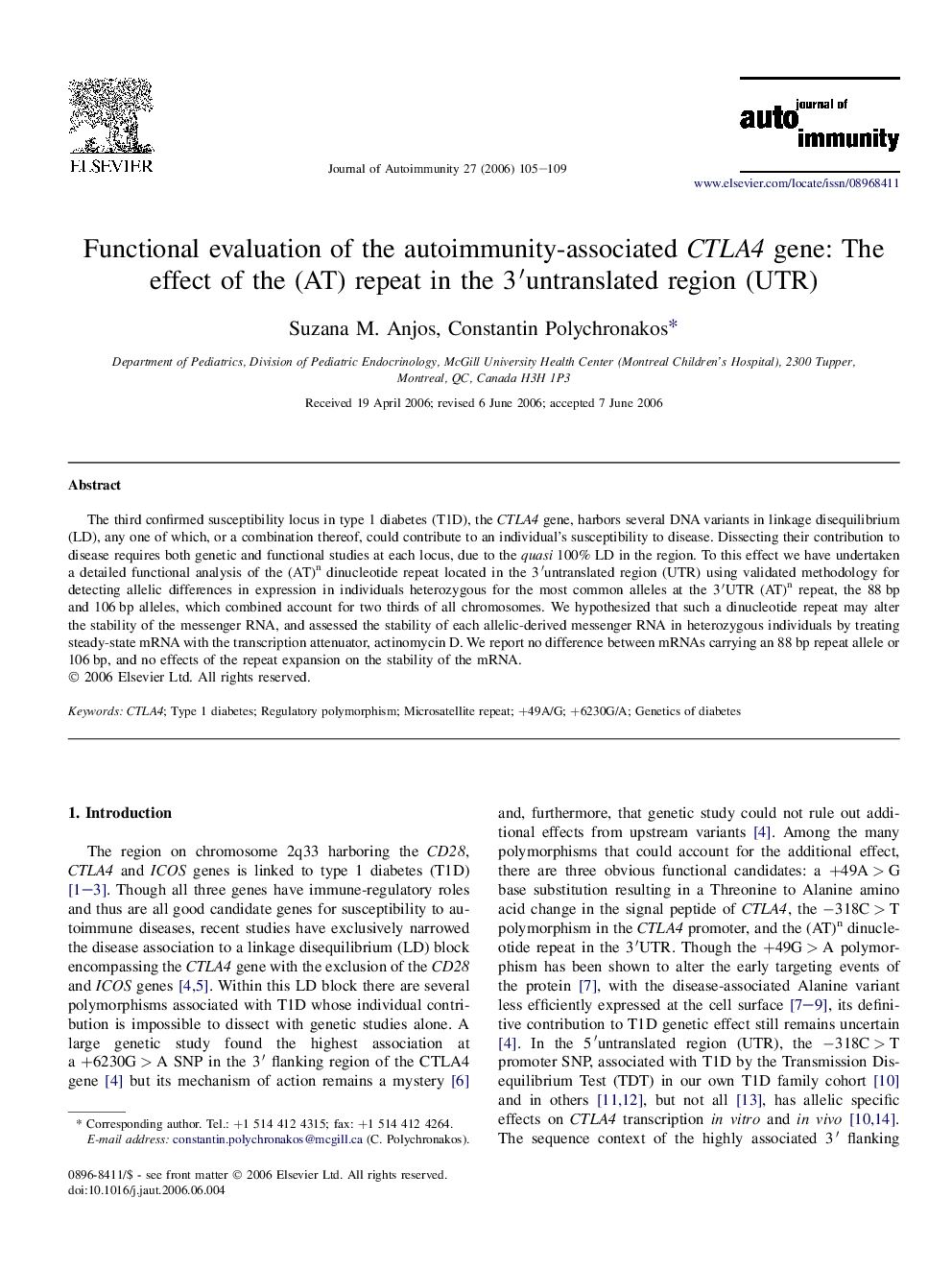| Article ID | Journal | Published Year | Pages | File Type |
|---|---|---|---|---|
| 3368579 | Journal of Autoimmunity | 2006 | 5 Pages |
The third confirmed susceptibility locus in type 1 diabetes (T1D), the CTLA4 gene, harbors several DNA variants in linkage disequilibrium (LD), any one of which, or a combination thereof, could contribute to an individual's susceptibility to disease. Dissecting their contribution to disease requires both genetic and functional studies at each locus, due to the quasi 100% LD in the region. To this effect we have undertaken a detailed functional analysis of the (AT)n dinucleotide repeat located in the 3′untranslated region (UTR) using validated methodology for detecting allelic differences in expression in individuals heterozygous for the most common alleles at the 3′UTR (AT)n repeat, the 88 bp and 106 bp alleles, which combined account for two thirds of all chromosomes. We hypothesized that such a dinucleotide repeat may alter the stability of the messenger RNA, and assessed the stability of each allelic-derived messenger RNA in heterozygous individuals by treating steady-state mRNA with the transcription attenuator, actinomycin D. We report no difference between mRNAs carrying an 88 bp repeat allele or 106 bp, and no effects of the repeat expansion on the stability of the mRNA.
